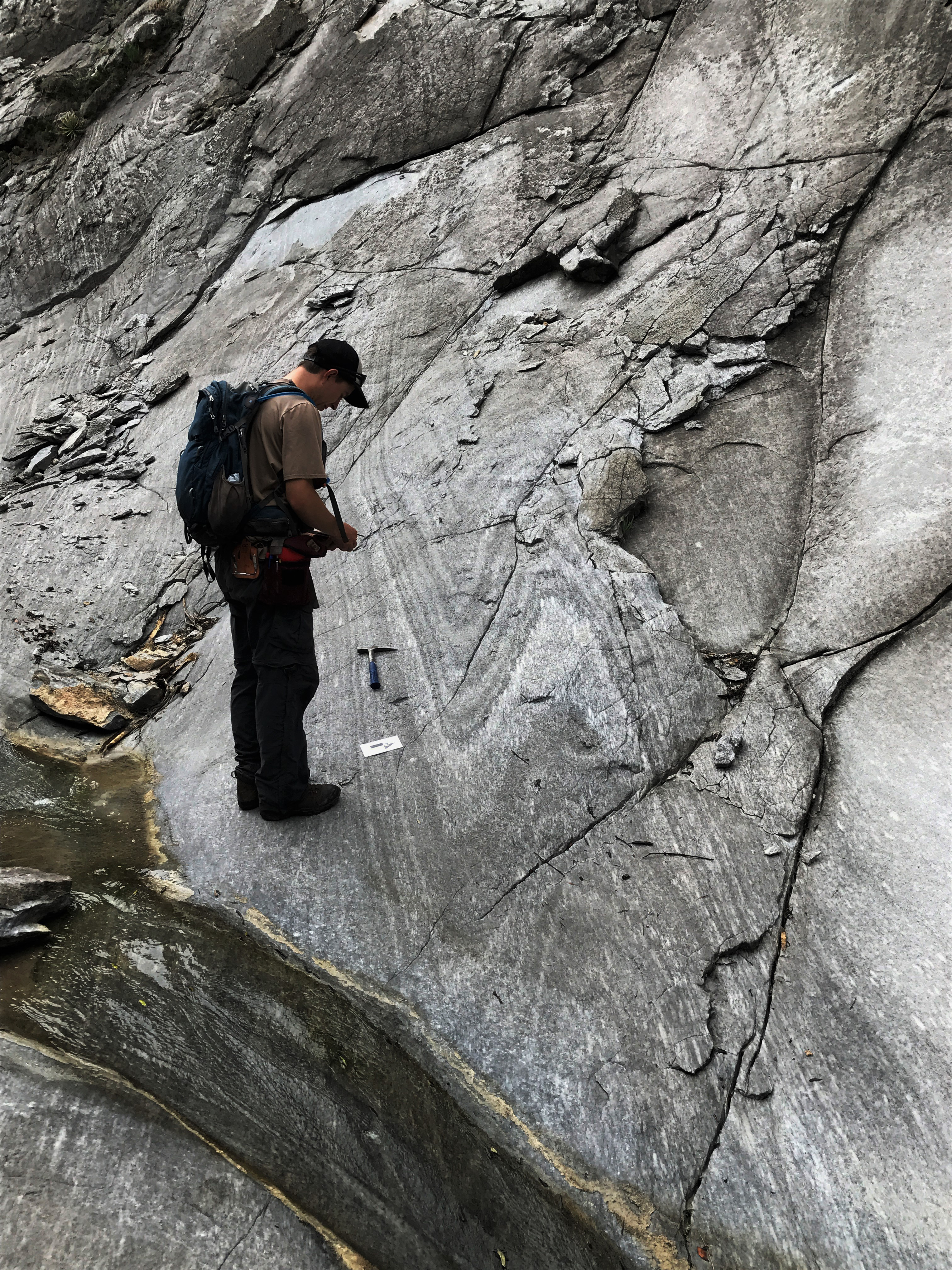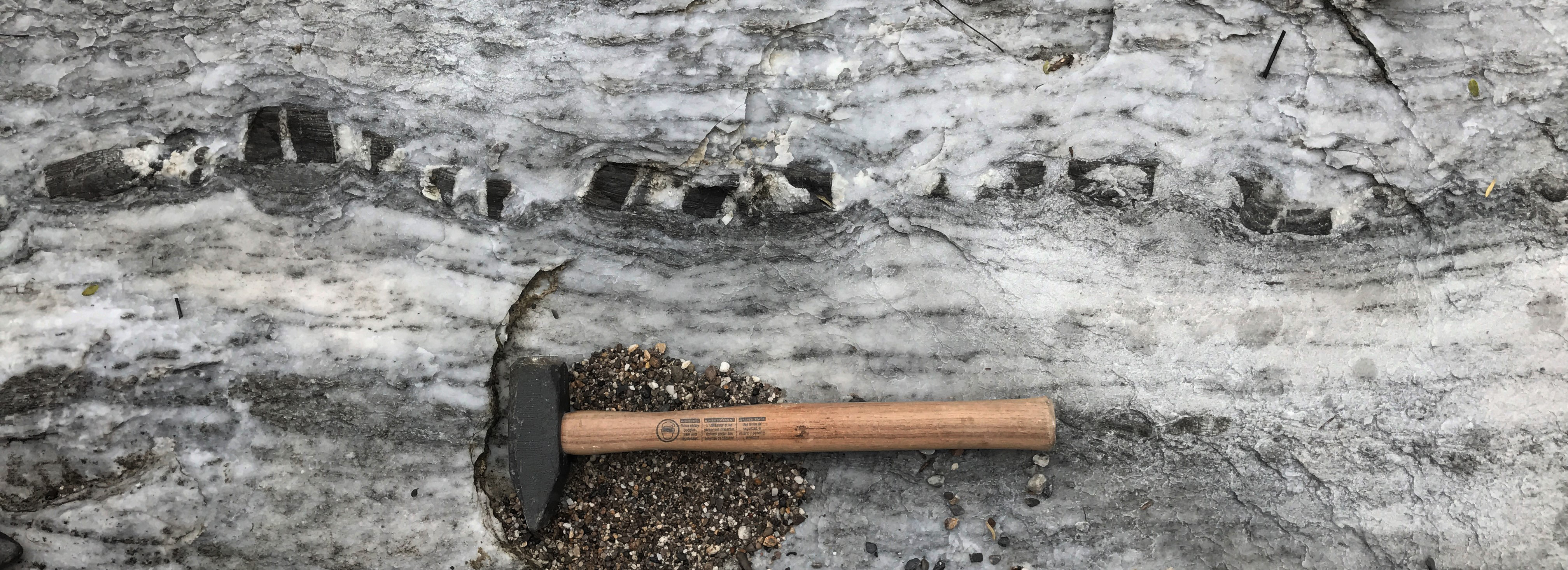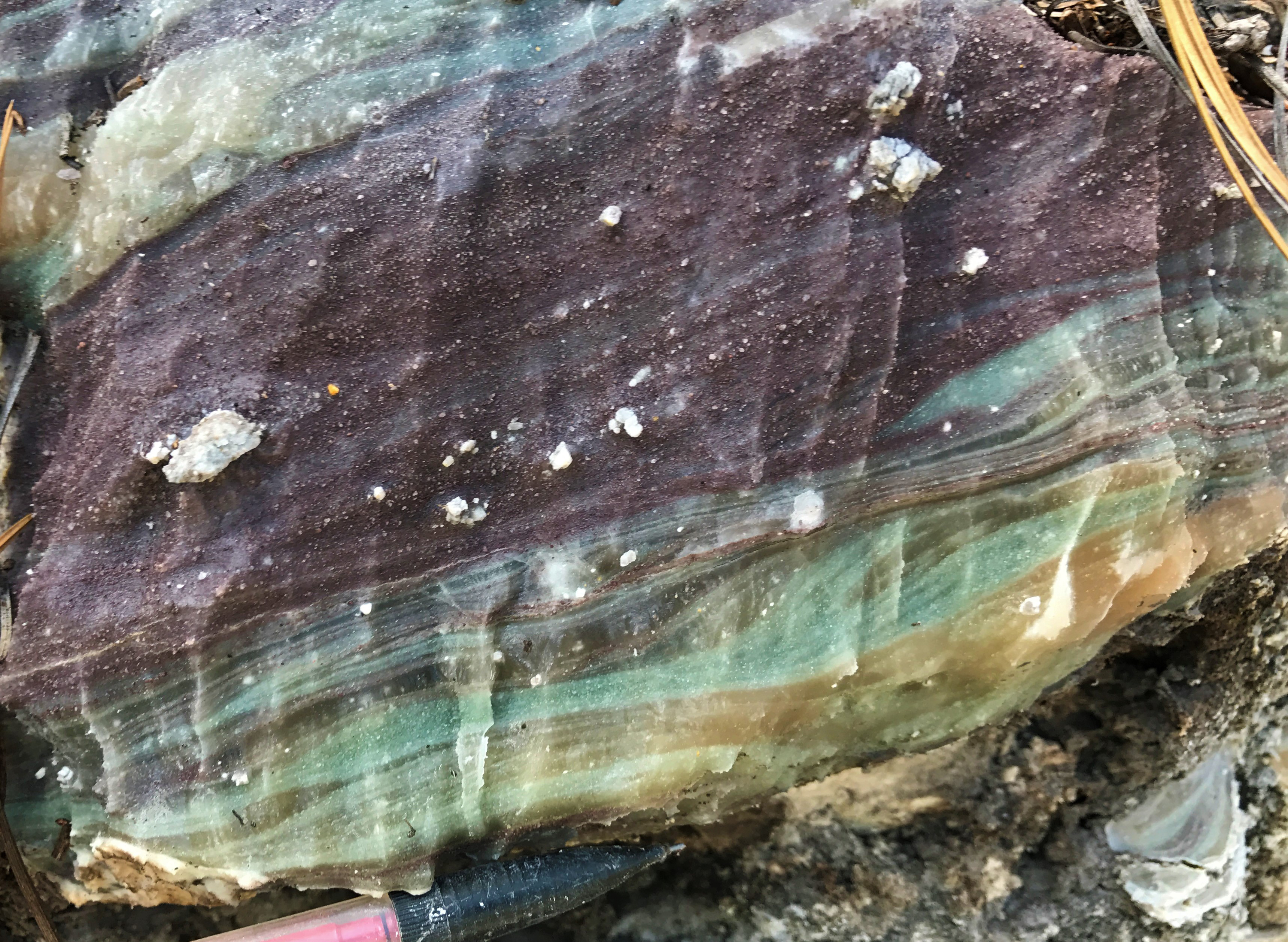Reports: ND856057-ND8: Kinematics and Strain in an Evaporite Decollement: Insights from the Minas Viejas Basal Shear Zone, Sierra Madre Oriental, Mexico
John Singleton, PhD, Colorado State University
The goal of this project is to understand the geometry, strain, and deformation conditions associated with a major evaporite décollement shear zone in the Sierra Madre Oriental, Mexico. PI John Singleton, three students (2 MS students and 1 undergraduate student), and one post-doctoral research scientist are involved in this project. As of August 31, 2017 our research group has completed two field trips to the field area. During these trips we collected a significant amount of structural data and samples for future analyses. We have also identified outstanding exposures south of our proposed field area that allow us to evaluate how deformation in the décollement relates to stratigraphic intervals above and below the evaporite-dominated Minas Viejas Formation (note: one of these field areas was suggested by a reviewer of the PRF ND proposal, and we are grateful for this suggestion).
Some significant preliminary results for this project include new insight into the strain geometry and magnitude within the evaporite décollement. Near the top of the décollement fabrics parallel the limbs of overturned folds, recording flexural shear compatible with these overburden folds (Figure 1). Sulfate nodules within this upper zone record heterogenous flattening strains (Figure 2), and boudinaged carbonate lenses indicate 90-670% orogen-parallel extension (Figure 3). Near the base of the Minas Viejas Formation a prominent ultramylonite zone up to ~70 m thick records extremely high strains that have proven difficult to quantify, but our fieldwork has confirmed that this zone records a consistent top-NE-directed sense of shear (Figure 4). We have high confidence that we will be able to determine the deformation temperatures associated with this shear zone based on samples we are preparing for analysis. By the end of the year we will have vitrinite reflectance data on a coal-bearing interval within the upper part of the Minas Viejas Formation, fluid inclusion data providing constraints on temperatures of synkinematic calcite veining in the lowermost carbonate member of the Minas Viejas Formation, and (U-Th)/He zircon thermochronologic data providing insight into the burial history of the Jurassic sandstone beds immediately below the Minas Viejas Formation. Our upcoming fieldwork will focus on detailed geologic mapping of an area where the Minas Viejas Formation dramatically thins along strike (towards the south), allowing us to evaluate how variations in thickness relate to internal décollement strain and deformation above and below the décollement. Our preliminary mapping suggests shortening drops down into lower structural levels (the Jurassic-Triassic red beds) where the Minas Viejas has thinned (Figure 5). For example, an the area where sulfate within Minas Viejas has thinned to <100 m, we have mapped a NE-vergent thrust fault that juxtaposes pervasively cleaved red beds over younger shale beds, omitting the stratigraphically intervening Minas Viejas Formation.
This project has provided outstanding field research experiences for 3 students and one postdoctoral fellow in our department. The spectacular geology and scenery of our project field area has inspired us all, and we are excited to return to the field this fall. This project has provided a major new research direction for PI Singleton, who has already learned a significant amount about deformation of sulfate, geometry of décollement zones, and the stratigraphy of the Sierra Madre Oriental. Singleton’s research in this region will likely continue long past the completion of this project, with at least one future project focusing on the transition from thin-skinned deformation associated with the evaporite décollement to thick-skinned shortening within the region. We are schedule to complete fieldwork on this project during the spring 2018 semester. A 1-year no-cost extension of this grant will allow one of the MS students to be supported for an additional year on this project (fall 2018–spring 2019). To date we have not published any abstracts or papers relating to this project, but we are planning to present research results at the 2018 GSA Cordilleran/Rocky Mountain section meeting, and we anticipate that two manuscripts will be submitted by spring 2019.
Figure 1. CSU MS student Skyler Mavor investigates asymmetric folds and axial-plane foliation (defined by elongate sulfate nodules) within the upper part of the Minas Viejas Formation. Evaporite strain here is dominated by flexural shear that is compatible with development of km-scale overburden folds
Figure 2. Strained sulfate nodules within the Minas Viejas Formation from the project area. Nodules in this area record a general flattening strain with a component of shear parallel to the flexural slip direction in the overlying Jurassic shale.
Figure 3. Boudinaged carbonate intervals within the Minas Viejas Formation. We quantified stretching recorded by this boudinage in several locations. At this particular locality the carbonate has undergone 92% NW-SE (orogen-parallel) extension.
Figure 4. S-C shear fabrics in the basal shear zone of the Minas Viejas consistently record a top-NE directed sense of shear (top-right in this photo).
Figure 5. A fault-bend fold developed within the Triassic-Jurassic red beds below the evaporite décollement. The red line shows the trace of the NE-vergent thrust fault, and the yellow lines show the trace of bedding in the hanging wall and footwall. We hypothesize that shortening has occurred at sub-decollement structural levels due to a lack of thick evaporite in this area.
















